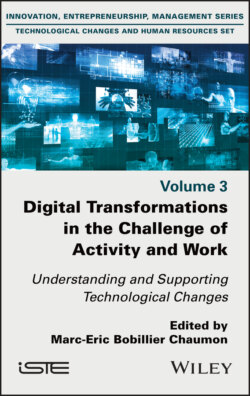Читать книгу Digital Transformations in the Challenge of Activity and Work - Группа авторов - Страница 49
3.4.2. Applications in various professional contexts
ОглавлениеVirtual reality is also used in professional contexts. In education, it is frequently used as a pedagogical tool, particularly for learning science. For example, it can illustrate the expression of proteins in mammals (Makransky et al. 2019) or the composition of molecules (Merchant et al. 2012).
Virtual reality is more widely used in vocational training contexts. There are a multitude of examples in this field. Surgery training is common (Fang et al. 2014; Khan et al. 2014), as is maintenance training (Gomes De Sá and Zachmann 1999; Ganier et al. 2013; Gavish et al. 2013). Applications have also been developed for assembly training, for example, for truck chassis (Ordaz et al. 2015) or car doors (Langley et al. 2016). There are also applications designed for risk prevention training, for example, in the construction sector (Sacks et al. 2013) or for home helpers (Polivka et al. 2019).
Virtual reality is also found in the field of design. In this context, it is used to replace or complement a physical prototype of a future product. Designers use virtual reality to inspect the product, to manipulate it, to evaluate it and to make design decisions. This applies to both vehicle design (see, for example, Berg and Vance 2017) and microwave oven fronts (Bruno and Muzzupappa 2010). It is also used in architecture (Paes et al. 2017), urban planning (Maffei et al. 2015) and landscaping (Guo and Yang 2013). The use of virtual reality to design manufacturing stations is common (Aromaa and Väänänen 2016; Bernard et al. 2019; Sagnier 2019).
Virtual reality is also becoming an increasingly therapeutic environment. It allows professionals to expose their patients to certain situations in a controlled and risk-free environment. In this context, it is integrated into the treatment of post-traumatic stress (Moraes et al. 2016) or delusions of persecution (Freeman et al. 2016). In addition, it can be used as a rehabilitation tool, for example, to treat balance disorders caused by certain pathologies (Hsu et al. 2017), or to offer upper limb rehabilitation after a cardiovascular accident (Shin et al. 2014).
Finally, virtual reality is proving to be a research tool. It enables the visualization and manipulation of different types of data, for example microscopic data (Theart et al. 2017) or atmospheric data (Helbig et al. 2014). It also allows psychological researchers to study user behavior. To illustrate this use of virtual reality, we can cite a study by Coeugnet et al. (2018) on the use of vibrotactile watches as a means of navigating a city, or a study by Morrongiello et al. (2019) on the behavior of children when crossing the road.
